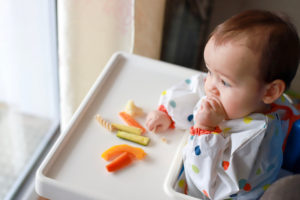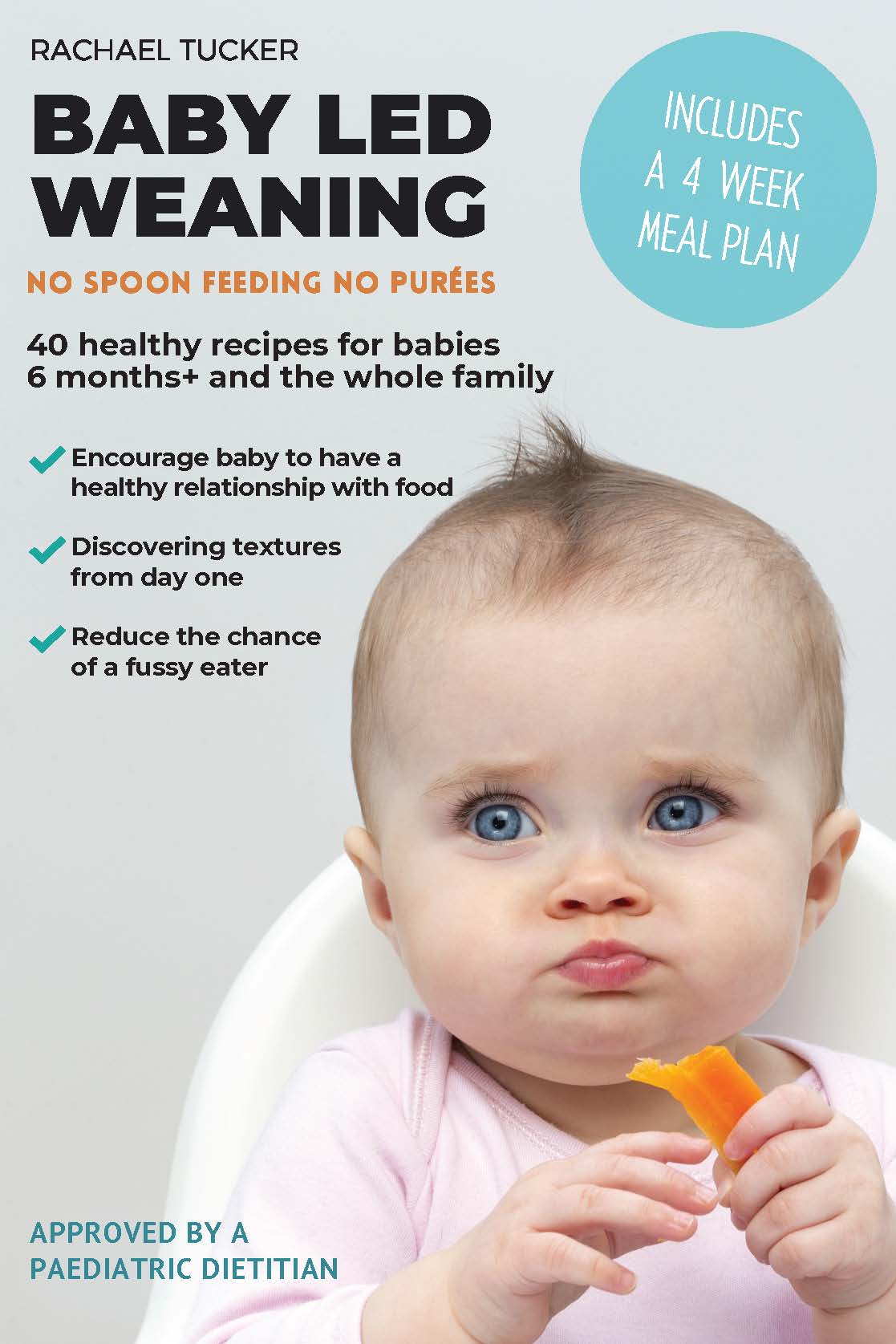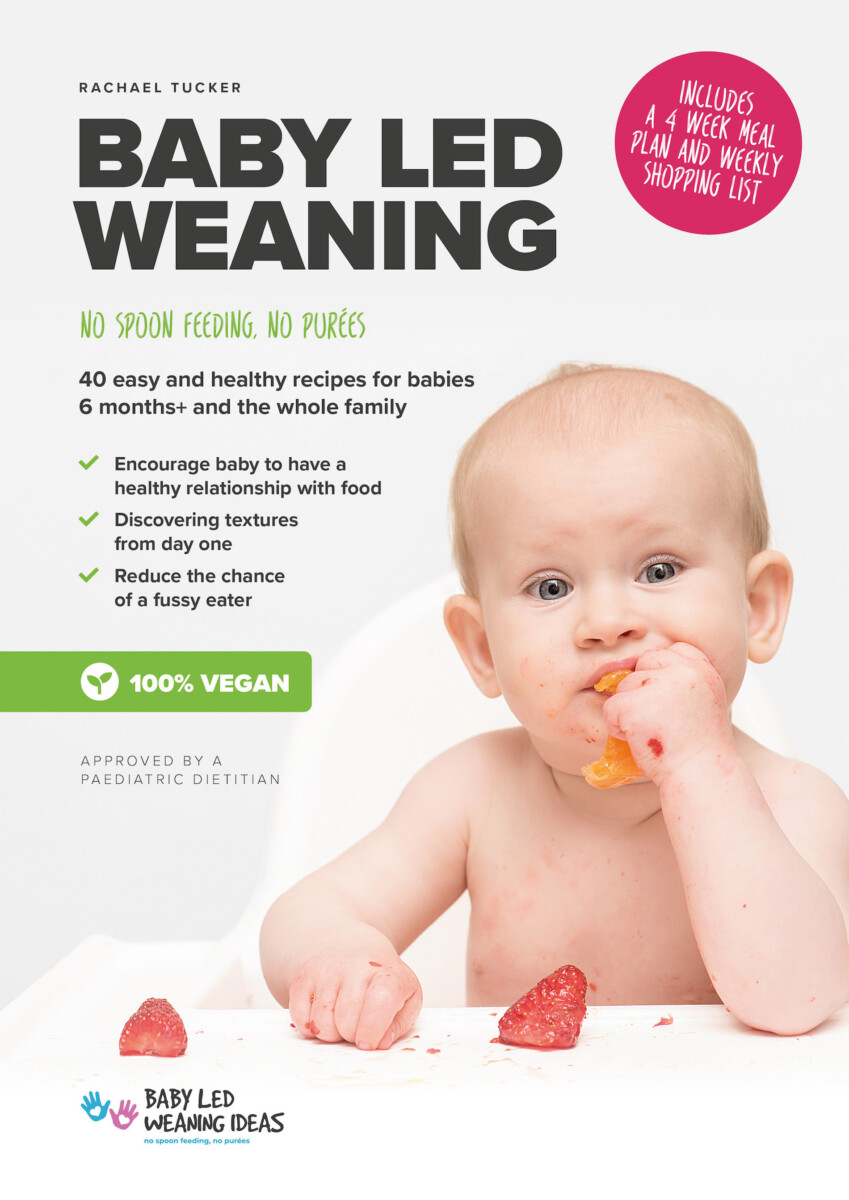The Ultimate Guide to Baby-Led Weaning (BLW): Introducing Finger Foods for Babies
Baby-led weaning (BLW) is an empowering and natural way to introduce solid foods to your baby, typically around 6 months old. Unlike traditional methods that begin with purees, baby-led weaning skips this stage and allows babies to explore and learn about solid foods through finger foods right from the start.
What is Baby-Led Weaning?
Baby-led weaning (BLW) encourages babies to feed themselves, starting from the moment they show readiness for solids (usually around 6 months). Since babies at this age can naturally handle finger foods, there’s no need for purees or spoon-feeding. Instead, babies learn to self-feed, pick up food, bring it to their mouth, chew, and eventually swallow—all at their own pace.
Just like other milestones such as rolling, crawling, walking, or talking, eating is a learned skill that your baby will master in their own time with plenty of practice and support. Baby-led weaning allows them to explore different textures and flavours, while giving them full control of their feeding experience.
“We loved baby led weaning! We started at 6 months old when Ava was showing all readiness signs. We found in the first few weeks of BLW it was mainly playing and learning how to bring food to mouth, chew and swallow. By 10 months old my baby was eating EVERYTHING! All my friends and family were amazed. My biggest tip to parents is to be patient, give it a few months focused of learning and master ‘eating’, whilst trusting your baby being in control of their own food at all times. Truth to say we now have a great little eater! Fuss-free meal times and Ava loves her food!”
What does Wean mean?
This is from the UK, not American. In the UK, ‘weaning’ means ‘adding complementary foods’, whereas in the States it means ‘giving up breastfeeding’.
Why Spoon Feeding is Unnecessary?
Spoon feeding is left over from the days when ‘our parents’ were advised to begin feeding their babies solids around 3 or 4 months of age (when their baby is too young to self-feed). Now days, health authorities including the world health organisation recommend to begin a babies solids journey around 6 months old. Research now indicates babies prior to 6 months old babies do not need solid foods, their bodies aren’t really ready for them, especially when breast milk (or formula) is the primary nutrition for babies within the first year of life. If you wait to your baby is 6 months old, this means you have skipped the spoon-feeding stage. At 6 months old babies are clever enough to feed themselves and they do not need to be spoon fed. Babies at 6mo want to handle their food themselves and love to discover new textures with their hands and mouth – it is a natural instinct! That is why Baby Led Weaning is the PERFECT way for your baby to discover food and textures naturally.
When to start BLW?
From 6 months old (rarely any earlier) when baby is showing all readiness signs to start baby led weaning.
Readiness signs

Around 6 months old (rarely any earlier) baby will start to show signs of readiness, which will determine when baby can commence BLW.
They’ll be able to:
- Can sit up with little or no support (Click here for definition for sitting upright)
- Can hold its head steady with a good neck and head control
- Can reach out, grab food effectively, take it to its mouth accurately and make gnawing and chewing motions
The following behaviours can be mistaken by parents as signs that their baby’s ready for solid foods:
- chewing their fists
- waking up in the night (more than usual)
- wanting extra milk feeds
These are all normal behaviours for babies and not necessarily a sign that they’re hungry or ready to start solid food.
Did you know? babies chew with their gums to begin with!
Benefits of Baby-Led Weaning
- Encourages Self-Regulation
Through baby-led weaning, babies learn to recognize their hunger and fullness cues. By letting them feed themselves, they gain a better understanding of when they’re satisfied, which can help prevent overeating later in life. - Develops Fine Motor Skills
Baby-led weaning helps improve hand-eye coordination and fine motor skills as babies practice picking up food, feeling different textures, and bringing it to their mouths. This process aids in the development of their muscles and coordination, preparing them for more complex tasks as they grow. - Creates Positive Mealtime Experiences
Eating together as a family is a core part of baby-led weaning. By including your baby at mealtimes and allowing them to explore food with the family, you foster positive associations with eating, encourage socialization, and create bonding moments at the table. - Variety of Textures and Flavors
Baby-led weaning gives babies the opportunity to explore a variety of textures from day one. Offering finger foods for babies of different shapes and sizes promotes better chewing, which can reduce the likelihood of becoming a picky eater later on. - No Pressure, No Meal Time Battles
One of the core principles of baby led weaning is trusting your baby to decide how much to eat. No games, no “airplane” tricks, and no forcing them to finish their food. This approach encourages relaxed mealtimes with no battles, creating a stress-free experience for both parents and baby. The focus is on mealtime enjoyment and learning, not on tricking your baby to eat. - Better Nutrition for the Whole Family
As you cook for your baby and the rest of the family, baby led weaning encourages healthier food choices for everyone. You’re likely to reduce sugar and salt in meals, limit processed foods, and focus on wholesome, nutritious ingredients. Babies eating family meals helps them develop lifelong healthy eating habits and exposes them to a wider variety of healthy foods from the start. - No Transition from Purees to Family Meals
Babies who are introduced to solid foods through baby led weaning don’t experience the usual transition from purees to “lumpy” foods and eventually to family meals. They eat the same food from the beginning, which can reduce picky eating later on. Being exposed to a variety of textures and flavors from the very start helps babies develop a more accepting attitude toward different foods, making them less likely to become fussy eaters. - Helps Prevent Picky Eating
Since baby-led weaning allows babies to eat the same food as the rest of the family from the beginning, it helps avoid the picky eating stages common in toddlers. With no added pressure and no food battles, babies are more likely to be open to trying new foods. This fosters healthy eating habits and greater food diversity. - Engagement with Family Mealtimes
Baby-led weaning encourages babies to engage in family mealtimes, observing conversations and sharing moments with the rest of the family. This not only builds social skills but also reinforces the importance of family togetherness at the dinner table. - Eating Out is Easier and More Affordable
Eating out becomes much simpler with baby-led weaning. Instead of needing to pack pureed foods or separate baby meals, your baby can simply share meals with the family. Most restaurants offer healthy sides like steamed vegetables or fruit, making family dining more convenient and budget-friendly. - Promotes Independence and Confidence
When babies are in charge of feeding themselves, they gain a sense of independence and confidence. This confidence extends beyond mealtime and into other areas of development, including problem-solving and decision-making.
Can You Switch from Purees to Baby-Led Weaning (BLW)?
What First Foods Should I Start With for Baby-Led Weaning?
When starting baby-led weaning (BLW), it’s important to offer a variety of finger foods for babies that are rich in essential nutrients to support your little one’s growth and development. You can begin with a mix of fruits, vegetables, legumes, beans, meats, starchy foods, and dairy—all while introducing home-cooked family meals right from day 1 of baby-led weaning.
Family-friendly meals like vegetable chicken casserole, spaghetti bolognese, mild dhal curry, tofu stir fry, shepherd’s pie, and risotto are perfect for baby-led weaning. Introducing family meals from day 1 is one of the greatest benefits of baby-led weaning—it makes mealtime easier for parents, as they only need to cook one meal for everyone, while also exposing your baby to a wide range of flavors, textures, and nutrients, which can help reduce the chance of picky eating down the track.
Let’s take a look at some great first foods for babies that offer important nutrients:
1. Vegetables for Baby-Led Weaning
When introducing vegetables to your baby, they should always be cooked until soft and easy to handle. Be sure to remove any tough skins before serving. Steaming, boiling, frying, roasting, or adding them to a stir-fry are great ways to prepare these foods for your baby. Some ideal baby-led weaning vegetables include:
- Broccoli
- Sweet potato
- Pumpkin
- Carrot
- Cauliflower
- Swede
- Spinach
- Green beans
- Zucchini (courgette)
- Asparagus
- Kale
- Cabbage
These finger foods for babies will help introduce your little one to different textures and flavors, while providing essential vitamins and minerals for healthy growth.
2. Fruits for Baby-Led Weaning
Fruits are a wonderful source of vitamins and minerals, and many are perfect for baby-led weaning. Make sure to remove any tough skins, pits, or stones, and serve fruits in pieces large enough for your baby to easily pick up. Some of the best first fruits for babies include:
- Banana
- Avocado
- Peach
- Pear
- Mango
- Kiwi
- Oranges
- Raspberries
- Strawberries
- Melon
- Papaya
- Plums
- Cucumber (remove skin)
For firmer fruits like apple, it’s best to grate or cook them (steamed or baked apple works great) to soften them for easier chewing. Offering these healthy fruits gives your baby a wide range of flavors and textures right from the start.
3. Proteins for Baby-Led Weaning
The protein foods group is essential for your baby’s growth, and can be introduced as early as 6 months. These foods are rich in iron, zinc, and other important nutrients necessary for healthy development. Here are some great baby-led weaning protein options:
- Chicken
- Turkey
- Beef
- Lamb
- Pork
- Fish (ensure bones are removed)
- Eggs
- Lentils
- Beans (such as chickpeas, black beans etc, ensure they are cooked and squished slightly before offering to babies under 12 months old)
- Tofu
- Pulses (like lentils and peas)
Make sure that these protein-rich foods are cooked, tender, and soft enough for your baby to pick up. They can be easily incorporated into family meals like casseroles, roasts, stir-fries, and pasta dishes, making mealtime more convenient and enjoyable for everyone.
4. Dairy for Baby-Led Weaning
Dairy can be introduced from around 6 months old and is a great source of calcium and healthy fats. Stick to pasteurized dairy products like full-fat yogurt and cheese, but avoid any sugary or processed varieties. Some great dairy options for baby-led weaning include:
- Full-fat unsweetened yogurt
- Ricotta
- Cottage cheese
- Mascarpone
- Swiss cheese
- Fresh mozzarella
- Creme fraiche
Both dairy and dairy-free milks (such as soy milk or pea milk) can be used in cooking or mixed into foods. However, it’s best not to offer them as drinks until your baby is 12 months old. After 12 months, you can offer dairy or dairy-free milk as a standalone drink.
5. Starchy Foods for Baby-Led Weaning
Starchy foods provide much-needed energy and are perfect for baby-led weaning. These foods are easy to prepare and can be served in fun shapes or bite-sized portions that your baby can pick up on their own. Great starchy first foods for babies include:
- Potato (sweet potato and regular)
- Rice (white or brown)
- Pasta (try whole wheat or pulse pasta for added nutrition)
- Porridge
- Oats
- Cornmeal
- Millet
- Quinoa
- Toast or bread (preferably whole grain)
- Pitta bread
- Chapatti
Consider making healthy muffins, pancakes, or breakfast loaves using nutritious ingredients to introduce your baby to a wide range of flavors and textures. Check out all my BLW recipes on the website for more ideas!
Important Tip for Baby-Led Weaning
When preparing cooked vegetables or fruits, ensure that they are soft enough for your baby to hold but firm enough not to break apart. Vegetables should be tender enough to squish between your thumb and index finger. If vegetables or fruits are too hard to do this, they should be cooked longer or not offered at all.

Allergies and Baby-Led Weaning: What You Need to Know
When introducing solid foods through baby-led weaning (BLW), it’s important to be mindful of food allergies and how they may affect your baby. If you have any concerns or questions about your baby’s potential food allergies, it’s always best to consult your healthcare professional for personalized advice.
Recent research on allergies suggests that introducing potential allergenic foods early—between 6 months and 12 months old—can actually help reduce the risk of developing food allergies later in life. Baby-led weaning offers a great opportunity to introduce these foods naturally, as it involves offering your baby a variety of whole foods they can safely pick up and explore on their own.
How to Introduce Allergenic Foods into Your Baby’s Diet
Starting at around 6 months, you can begin to introduce common allergenic foods for babies into their diet. Continuing to offer these foods regularly helps build your baby’s tolerance and reduces the likelihood of developing an allergy to them. Baby-led weaning can make this process easier since your baby will be naturally exploring different textures and flavors through finger foods.
Common allergenic foods for babies include:
- Eggs
- Nuts (especially nut butters like peanut butter)
- Dairy (such as yogurt or cheese)
- Fish (be sure to remove any bones)
- Soy (in tofu or soy milk)
- Wheat (in bread, pasta, or cereals)
Important Notes About Baby Allergies
While introducing allergenic foods early can reduce the risk of allergies, it’s important to remember that some babies may still develop allergies, particularly if there is a family history of allergies or conditions like eczema. If your baby has a family history of food allergies or eczema, it’s especially important to consult with your healthcare provider before introducing certain foods.
Tips for Introducing Allergenic Foods in Baby-Led Weaning
- Start Slowly: Begin by offering small amounts of potential allergens and wait 3-5 days between introducing each new food. This will help you identify any adverse reactions.
- Watch for Reactions: Signs of an allergy might include hives, swelling, vomiting, or difficulty breathing. If you suspect an allergy, seek medical help immediately.
- Consistency is Key: Once an allergenic food is safely introduced, continue offering it regularly in your baby’s diet to help build tolerance.
Final Thoughts on Allergies and Baby-Led Weaning
Introducing allergenic foods through baby-led weaning is a safe and effective way to reduce the chances of developing food allergies in the future. With careful planning and the guidance of your healthcare provider, you can ensure that your baby is getting a well-rounded, healthy start with a variety of nutrient-dense foods, while also managing any potential allergies.
Foods to Avoid in the First Year: Baby-Led Weaning Guide
When introducing solids through baby-led weaning (BLW), it’s important to be mindful of certain foods that should be avoided during your baby’s first year. Babies have delicate systems, and some foods can pose health risks or hinder development. Here’s a guide to foods to avoid for babies and how to ensure your little one is eating safely while still enjoying the benefits of baby-led weaning.
1. Salt
Salt is harmful to babies under 1 year because their kidneys are not developed enough to process it. Excessive salt intake can strain your baby’s kidneys and lead to potential health issues. Babies should consume no more than 1g of salt (0.4g sodium) per day.
Watch out for foods high in salt, such as:
- Cheeses (especially processed or salty varieties)
- Bread
- Sausages, ham, and bacon
- Yeast extract and soy sauce
- Smoked meats and processed foods (including deli meats)
General guideline:
- High salt = More than 1.5g (0.6g sodium) per 100g
- Low salt = Less than 0.3g per 100g
As a parent following baby-led weaning, always check labels and avoid high-salt foods when preparing family meals.
2. Sugar
Sugar provides no nutritional value and contributes to tooth decay. It’s best to avoid added sugars in your baby’s diet, especially during the first year. To naturally sweeten foods like yogurt or porridges, try healthier alternatives like:
- Dried soft fruit (unsweetened)
- Cinnamon
- Lemon juice
This approach not only prevents sugar-related issues but also encourages your baby to develop a palate for naturally sweet, whole foods.
3. Certain Types of Fish
Some fish contain high levels of mercury, which can affect your baby’s developing nervous system. Avoid shark, swordfish, and marlin, as these fish may contain harmful toxins.
Safe fish options:
- Oily fish like salmon, mackerel, herring, and sardines are rich in omega-3s and nutrients.
However, it’s recommended that women of childbearing age and pregnant women limit their consumption of oily fish to no more than twice a week due to potential pollutants. For men and older women, up to four servings per week is generally considered safe.
Canned tuna (light tuna or other oily fish) is a safer option and can be eaten more frequently.
4. Additives & Artificial Ingredients
Additives like monosodium glutamate (MSG), artificial preservatives, flavors, and sweeteners should be avoided as much as possible. These ingredients provide no nutritional benefit and have been linked to hyperactivity in children. Choose fresh, whole foods when following a baby-led weaning approach to avoid unnecessary chemicals in your baby’s diet.
5. Honey
Honey should be avoided until your baby is over 1 year old. Honey can cause botulism, a rare but serious form of food poisoning that can affect babies’ developing digestive systems.
6. Uncooked Eggs
Raw or undercooked eggs, often linked to salmonella, can cause foodborne illnesses. Always cook eggs thoroughly before offering them to your baby. Cooked eggs, including scrambled, hard-boiled, or omelettes, can be introduced after 6 months as part of baby-led weaning.
In the UK, you can offer runny eggs to babies 6 months and older only if they have the Lion mark, indicating they are free from salmonella.
7. Hydrogenated Fats & Trans Fats
Avoid foods containing hydrogenated fats and trans fatty acids. These fats are often found in processed foods and can interfere with the absorption of healthy fats. These fats have no place in a healthy baby-led weaning diet, as they provide no nutritional benefits and may contribute to long-term health risks.
8. Juice & Sugary Drinks
Babies should drink only breast milk or formula for the first 6 months, and after 6 months, water is a great addition to your baby’s diet. Juice and sugar-sweetened beverages should be avoided entirely during the first year, as they can contribute to tooth decay and poor nutrition.
9. Foods that Are Choking Hazards
When following baby-led weaning, it’s crucial to be aware of potential choking hazards. Always supervise your baby while eating, and ensure foods are cut into appropriate sizes. Here are some foods that can pose a choking risk:
- Whole grapes (always cut them lengthwise into halves or quarters)
- Cherries (remove the stone)
- Cherry tomatoes (cut them in half or quarters lengthwise)
- Whole nuts and popcorn (avoid until at least 5 years old, or crush them into smaller pieces or serve as nut butters)
- Bony fish (ensure bones are removed)
- Hard apple slices or raw carrots (especially before 10 months—offer them cooked or softened)
- Sausages (cut lengthwise to prevent large, hard pieces)
Tips for Safe Baby-Led Weaning
- Always supervise your baby while eating.
- Encourage your baby to sit down and focus on eating. Avoid distractions such as walking, talking, or watching TV during meals.
- Offer a variety of healthy, well-cooked finger foods to allow your baby to explore textures and flavours safely.
When introducing solids during the first year through baby-led weaning, it’s essential to be mindful of the foods your baby eats. Avoiding salt, sugar, certain fish, and other risky foods can help ensure your baby develops healthy eating habits and avoids potential health issues. Always consult your healthcare professional if you have any concerns about allergies or specific foods to avoid.
Understanding Food Regressions in Baby-Led Weaning
Yes, we definitely experienced food regressions around 12 months, 14 months, 16 months, and even at 2 years old. These phases are totally normal and part of your baby’s developmental journey. Whether it’s due to teething, a tummy bug, a cold, or changes in their childcare environment, babies go through ups and downs in their eating habits.
Sometimes, it’s not just about food – developmental milestones like learning to assert control or make decisions (especially around age 2) can affect their eating habits as well. Think of it this way: There are days when even adults don’t feel like eating for various reasons. Your baby may be experiencing the same thing.
How to Navigate Regressions
The key to getting through these food regressions is staying calm and patient. Here are some tips:
- Don’t rush your baby to eat. Pressuring them can cause more stress, leading to decreased appetite and increasing the chances of them becoming even fussier about food.
- Eat together as a family. Mealtime should be a relaxed, enjoyable experience. Offer praise and encouragement when your baby eats, but never force it.
- Remove distractions like TV, toys, or screens. This helps your baby focus on the food and makes mealtime more about family interaction and connection.
For example, when Ava was around 12 months old, she suddenly stopped eating vegetables for about two weeks. Even though she didn’t eat them, we kept offering a variety of veggies, knowing that it was just a phase. The following week, she was back to eating them – this is completely normal!
Trusting Your Baby’s Appetite
In our experience, we never forced Ava to eat anything she didn’t want to. If she wasn’t interested in certain foods, we trusted that her body didn’t need those nutrients at that moment. We didn’t bribe her with rewards like “If you eat your veggies, you can have dessert.” Instead, we offered a healthy variety of foods and allowed her to make the decision about what she wanted to eat.
As parents practicing baby-led weaning, we know that trusting your baby’s cues is essential. They are learning to listen to their own hunger signals, and we support that process by providing healthy options and giving them the autonomy to choose.
Offering Water with Meals: A Guide for Babies Starting Solids (6 Months+)
Healthy babies under 6 months old do not need extra water. Breast milk and/or formula provide all the fluids they need during this time. However, once you begin introducing solid foods around 6 months old, it’s important to start offering water with meals to help keep your baby hydrated and support their developing digestive system.
Why Offer Water with Meals?
At 6 months, as your baby starts their baby-led weaning (BLW) journey, offering water during mealtimes can help them learn how to drink from a cup and establish healthy hydration habits. Water also aids in the digestion of solid foods and helps prevent constipation. If you live in an area with fluoridated water, drinking water can also play a role in preventing tooth decay as your baby’s teeth begin to emerge.
A small amount of water is also beneficial on particularly hot days to keep your baby cool and hydrated. However, it’s always best to check with your child’s doctor about the safe amount of water to offer, especially in very hot weather.
Drinks for Babies 6-12 Months: What to Offer
During the first year of life, babies should drink breastmilk (or formula) as their main source of nutrition and hydration. Once you introduce solid foods around 6 months, you can begin offering water with meals, but try to avoid juice or sugar-sweetened beverages during this period.
Introducing juice or sugary drinks can lead to tooth decay, unhealthy weight gain, and may interfere with your baby’s natural preference for healthy, whole foods. Water remains the best drink choice for babies from 6 months onwards, alongside breastfeeding or formula feeding.
Key Tips for Hydration in Baby-Led Weaning
- Offer water in a small cup with meals starting at 6 months.
- Avoid juice and sugary drinks during the first year.
- Always check with your doctor if you’re unsure about how much water your baby should be drinking, especially in hot weather.
- Fluoridated water is beneficial for helping prevent tooth decay as your baby’s teeth begin to grow.
Join a baby led weaning support group
Please join my support group Facebook group ‘Baby led weaning support & ideas group’, I created this group for mum, dads, grandparents, caregivers, childcare workers etc to have somewhere for BLW support. The group has hundreds of mums/dad etc seeking support and can ask the other members questions about BLW to help each other out, post photos, encouragement and motivation along their BLWing journey and food discovery. This group does not provide professional advise its just a forum for sharing experiences.
Please consult your paeditrition and speak with your health visitor or doctor if you have any concerns about your baby’s eating. Many health centres offer weaning ‘clinics’ and advice on different meal options.
Reference:
- https://www.nhs.uk/conditions/pregnancy-and-baby/solid-foods-weaning/
- https://www.nhs.uk/start4life/weaning/what-to-feed-your-baby/around-6-months
- http://www.rapleyweaning.com
- Frequently asked questions Baby Led Weaning Gill Rapley
- http://www.rapleyweaning.com/assets/Sitting_upright.pdf
- World Health Organization
- The method of BLW became popular about a decade ago after the publication of the Baby Led Weaning: The Essential Guide to Introducing Solid Food by UK author Gill Rapley.







